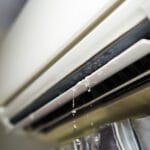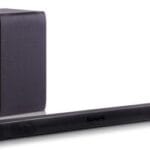To clean a generator carburetor without removing it, use a carburetor cleaner spray and apply it directly into the carburetor. Ensure the engine is off and cool before starting this process.
Keeping a generator in top condition is crucial for its performance and longevity. A common issue that affects the efficiency of a generator is a dirty carburetor. Dirt, debris, and old fuel can clog the carburetor, leading to poor engine performance or even failure to start.
Regular maintenance, including cleaning the carburetor, can prevent these issues. While removing the carburetor for a thorough cleaning is often recommended, it’s not always necessary or feasible. The method of cleaning the carburetor without removing it provides a convenient solution for maintaining your generator’s performance. This approach saves time and reduces the complexity of the task, making it accessible even to those with limited mechanical skills.
Introduction To Carburetor Maintenance
Maintaining your generator’s carburetor is key to peak performance. Over time, fuel residues can clog the carburetor, affecting your generator’s efficiency. Cleaning it regularly keeps your generator ready for emergencies. Learn to clean your carburetor without the hassle of removing it.
Importance Of Regular Cleaning
Regular cleaning of your generator’s carburetor is vital. It ensures:
- Reliable starts: A clean carburetor helps your generator start quickly.
- Smooth operation: It prevents stalling and rough idling.
- Fuel efficiency: A clean carburetor optimizes fuel use.
- Longevity: It extends the life of your generator.
Symptoms Of A Dirty Carburetor
Spotting a dirty carburetor is easy. Look for these signs:
| Signs | Meaning |
|---|---|
| Hard starts | Struggle to start the generator |
| Rough idling | Uneven running when idle |
| Stalling | Generator stops unexpectedly |
| Increased fuel use | Uses more fuel than usual |

Credit: wenproducts.com
Safety First
When tackling generator maintenance, safety takes top priority. Generators are complex machines. They require careful handling to avoid accidents. Cleaning a carburetor without removal is delicate work. It involves fuel and other flammable substances. Taking the right precautions is essential. It ensures a safe and effective cleaning process.
Necessary Precautions
- Turn off the generator completely.
- Allow the engine to cool down before starting.
- Work in a well-ventilated area to avoid fume inhalation.
- Keep a fire extinguisher nearby in case of emergencies.
- Wear protective gear such as gloves and safety glasses.
Tools And Materials Needed
| Tool/Material | Use |
|---|---|
| Carburetor Cleaner | To dissolve deposits and gunk |
| Compressed Air | For blowing out debris |
| Wire Brush | To scrub off stubborn particles |
| Screwdrivers | To remove carburetor covers |
| Pliers | For gripping and removing parts |
Initial Preparation
Preparing to clean your generator’s carburetor is crucial. A clean carburetor ensures smooth engine operation. Follow these steps before starting the cleaning process.
Shutting Down The Generator
Ensure safety by turning off your generator. Let it cool down. Remove the spark plug wire to prevent accidental starts.
Locating The Carburetor
Find your generator’s carburetor. It is usually near the air filter. Consult your manual if unsure.

Credit: www.youtube.com
Cleaning Process
The cleaning process of a generator carburetor is crucial. It ensures smooth operation. We will discuss how to clean it without removing it.
Spraying Carburetor Cleaner
First, locate the carburetor’s air intake. It’s where air enters. Turn off the generator. Ensure it’s cool. Safety first!
Use a quality carburetor cleaner spray. Aim it directly into the air intake. Short bursts work best. Wait a few minutes. This helps dissolve dirt and grime.
Start the generator. Let it run for a few minutes. This action helps the cleaner work through the carburetor, removing unwanted deposits.
Using Compressed Air
After spraying, compressed air can help. It removes loosened debris.
Ensure the generator is off and cool. Safety is paramount.
Attach a compressed air nozzle to your air compressor. Use short, controlled bursts of air into the air intake. This step helps clear out any remaining particles.
Repeat if necessary. Sometimes, stubborn debris requires a second round.
These steps help keep your generator running smoothly. Regular cleaning prevents build-up and ensures longevity.
Additional Cleaning Techniques
Maintaining a clean generator carburetor ensures efficient performance. Beyond basic removal and cleaning, other techniques can help. Let’s explore these additional methods.
Using A Carburetor Cleaning Additive
Carburetor cleaning additives offer a simple solution. These powerful liquids dissolve dirt and grime inside the carburetor. Just add them to your generator’s fuel. Over time, they clean the carburetor as the generator runs. Always follow the product’s instructions for the best results. This method is great for regular maintenance.
- Choose a high-quality additive for effective cleaning.
- Add it directly to the fuel tank.
- Run the generator to allow the additive to work.
Manual Cleaning With Brushes
For targeted cleaning, manual brushing is effective. Use small brushes or toothbrushes for this task. They reach tight spots inside the carburetor. First, turn off the generator and access the carburetor’s exterior. Gently scrub the visible parts with the brush. Use a carburetor cleaner spray for better results. This method requires more effort but provides thorough cleaning.
- Turn off the generator and let it cool.
- Access the carburetor’s exterior.
- Use a small brush to clean tight spots.
- Spray with carburetor cleaner for deeper cleaning.
Both methods keep your generator running smoothly. Regular maintenance prevents future problems. Choose the best method for your needs.
Reassembling And Testing
Reassembling and Testing your generator’s carburetor is crucial. It ensures smooth performance. Follow these steps for a successful reassembly and test run.
Reconnecting Components
- Align each component carefully.
- Reattach hoses and wires.
- Ensure a snug, secure fit.
- Double-check connections for leaks.
Once reconnected, inspect for any loose parts. A visual check can save future troubles.
Starting The Generator
- Turn the fuel valve on.
- Move the choke to the start position.
- Press the start button or pull the start cord.
- Listen for a smooth, even sound.
Observe the generator’s behavior. It should run without hiccups. If it does, your cleaning was a success.
Monitor for any unusual noises or vibrations. These could indicate a problem. Address them quickly to prevent damage.
Preventive Measures
Preventive measures keep your generator’s carburetor clean. They save time and money. A well-maintained carburetor ensures your generator runs smoothly. Let’s explore how to maintain your generator without removing the carburetor.
Regular Maintenance Tips
Keeping your generator in top shape is crucial. Regular checks are a must. Follow these tips for optimal performance:
- Inspect the air filter: Clean or replace it as needed.
- Check the spark plug: Replace if it’s worn or damaged.
- Use carburetor cleaner: Spray it regularly to dissolve deposits.
- Run the generator: Do this monthly to prevent buildup.
Fuel Quality And Storage
Good fuel is key for a clean carburetor. Use fresh, high-quality fuel always.
| Fuel Type | Storage Tips |
|---|---|
| Regular Unleaded | Store in a cool, dry place. Use fuel stabilizer. |
| Premium Unleaded | Use quickly. Avoid long-term storage. |
Remember to empty the tank before storage. This prevents stale fuel problems.
Troubleshooting Common Issues
Maintaining a generator ensures reliable performance. Sometimes, a carburetor may need attention. Common signs include rough idling, starting troubles, and poor fuel efficiency. Diagnosing issues promptly can save time and prevent further damage.
Dealing With Persistent Problems
- Check the air filter for clogs.
- Inspect the spark plug for deposits.
- Use carburetor cleaner spray directly.
- Ensure the fuel mix is correct.
- Look for any visible blockages.
Stable performance often returns with these steps. Repeat if necessary. Persistent issues might indicate internal damage.
When To Seek Professional Help
Complex problems require expert skills. Seek help if:
- Engine performance doesn’t improve.
- You notice fuel leaks.
- There’s damage to the carburetor.
- The generator has been idle for long.
Professionals offer diagnostics and repair. They ensure your generator runs smoothly. Delaying can lead to costly repairs.

Credit: wenproducts.com
Frequently Asked Questions
Can Vinegar Clean Generator Carburetors?
Vinegar is an effective, natural cleaning agent that can help dissolve carburetor deposits when used in a soak method, though it may not be as thorough as a full disassembly.
Is Carburetor Cleaning Without Removal Possible?
Yes, carburetor cleaning can be done without removal by using carburetor cleaner sprays to dissolve debris and buildup directly through the air intake.
What Tools Are Needed For In-place Carburetor Cleaning?
Typically, a screwdriver, carburetor cleaner spray, and protective gloves are sufficient for cleaning a carburetor without removing it from the generator.
How Often Should A Generator Carburetor Be Cleaned?
To maintain optimal performance, cleaning the carburetor once per season or after every 100 hours of use is recommended.
What Signs Indicate A Dirty Generator Carburetor?
A dirty generator carburetor may cause starting difficulties, rough idling, stalling, and decreased fuel efficiency, signaling it’s time for cleaning.
Conclusion
Maintaining your generator’s carburetor can be simple with the right approach. This guide has shown you how to keep it clean without disassembly. Regular care ensures peak performance and longevity. Embrace these easy steps for a smooth-running generator ready to power your needs anytime.




